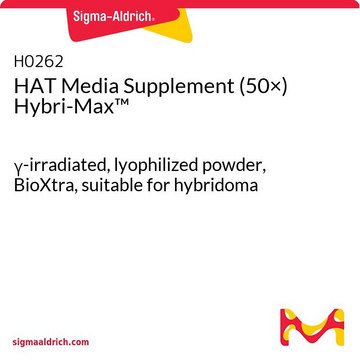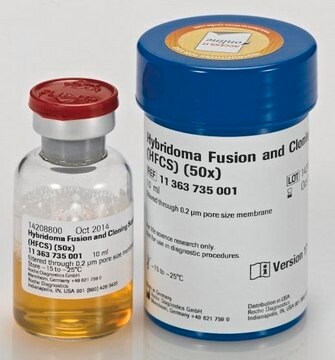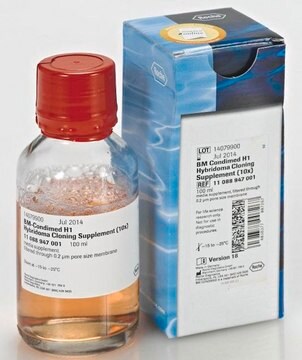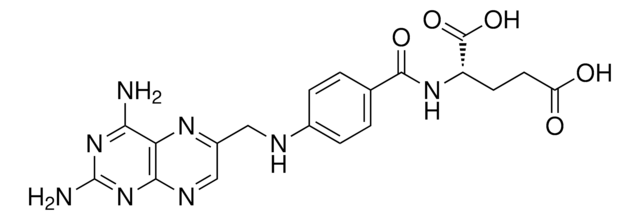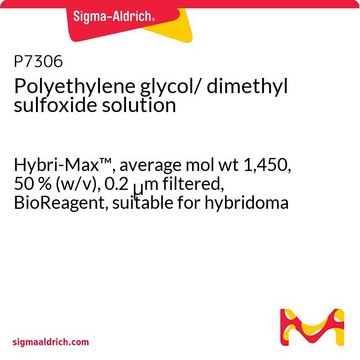H0137
HT Media Supplement (50×) Hybri-Max™
lyophilized powder, suitable for hybridoma, BioXtra
Synonyme(s) :
HT Supplement, Hypoxanthine-Thymidin (HT) media supplement
About This Item
Produits recommandés
product name
HT Media Supplement (50×) Hybri-Max™, lyophilized powder, γ-irradiated, BioXtra, suitable for hybridoma
Niveau de qualité
Stérilité
γ-irradiated
Gamme de produits
BioXtra
Forme
lyophilized powder
Technique(s)
cell culture | hybridoma: suitable
Impuretés
endotoxin, tested
Température de stockage
−20°C
Application
Reconstitution
Informations légales
Code de la classe de stockage
11 - Combustible Solids
Classe de danger pour l'eau (WGK)
WGK 3
Point d'éclair (°F)
Not applicable
Point d'éclair (°C)
Not applicable
Équipement de protection individuelle
Eyeshields, Gloves, type N95 (US)
Certificats d'analyse (COA)
Recherchez un Certificats d'analyse (COA) en saisissant le numéro de lot du produit. Les numéros de lot figurent sur l'étiquette du produit après les mots "Lot" ou "Batch".
Déjà en possession de ce produit ?
Retrouvez la documentation relative aux produits que vous avez récemment achetés dans la Bibliothèque de documents.
Les clients ont également consulté
Protocoles
Perform colorimetric assays for nonradioactive quantification of cellular proliferation, viability, and cytotoxicity for adherent or suspension cells cultured in 96-well microplates.
MTT assay protocol for measuring cell viability, proliferation and cytotoxicity. Instructions for MTT reagent preparation and examples of applications.
Notre équipe de scientifiques dispose d'une expérience dans tous les secteurs de la recherche, notamment en sciences de la vie, science des matériaux, synthèse chimique, chromatographie, analyse et dans de nombreux autres domaines..
Contacter notre Service technique